A new Lidl Wine Tour starts this morning and will continue until stocks run out or until the January Wine Tour begins – whichever happens first.
The promotion contains about 30 wines from 11 different countries which are priced from £5.99 upwards.
I have selected my personal top seven from the list and have added the customary few words to explain why I have chosen them.
Also today we have the usual Best of the Rest and a Top Tip in which an expert explores in detail a category of wine that never seems to get the attention it deserves.
Remember that many featured wines now have a hyperlink to the retailer’s website for all the reasons I set out down the page in a recent Top Tip.
As usual, use any picture provided here to guide you quickly towards the wine on crowded display.
Lovely, dry riesling

Vineyards in the Baden area of South Germany largely sit between the Black Forest and the Rhine and have an increasing reputation for their red wines but, here, do brilliantly with something more traditional – riesling!
Sharp with vibrant (almost assertive) lime acidity, 2018 Von Göler Riesling Trocken (£7.99 and 12% abv) brings us soft apple and pear fruit – with a little prickle to the tongue – and appealing tangerine depth.
Alsace does pinot blanc well

With help from New Zealand, classy pinot gris is now much better known but pinot blanc is still largely underappreciated except, perhaps, in Alsace where it gets a lot of exposure in Cremant and in some great value still wines – like this one.
Pinot blanc’s extra weightiness comes over clearly in 2018 Alsace Weiber Pinot Blanc (£7.99 and 12%) where soft apple fruit is given freshness by lively acidity and substance from a neat herbal texture.
Over to the reds
I have never seen an exact definition of passo but the word itself is close enough to appassimento and ripasso to know that it involves grapes being dried (on the vine or after picking) and the result used to add texture and other aspects to the finished wine.
See the effect in Southern Italy’s mellow 2018 Passo Mastro Negroamaro Primitivo Salento (£5.99 and 13.5%) with its sweet edged cherry and blackcurrant fruit embellished by just a hint of sage but displaying only the gentlest of tannin.
Staying in Italy

Moving slightly north, Rosso di Montepulciano is a junior version of Vino Nobile di Montepulciano and is intended to be younger, fresher, more approachable and ready sooner than its illustrious elder brother.
Predictably light and soft, 2018 Rosso di Montepulciano (£6.99 and 13%) has bright, bold raspberry and cherry fruit with good acidity, spicy touches, an earthy minerality but limited tannin.
To the other side of the world now

Hawkes Bay on the eastern coast of New Zealand’s North Island has a long (70 year) tradition with classic Bordeaux grapes and (as it might in that region) this sophisticated blend adds 15% cabernet franc to the varieties name checked on the label.
Quality is apparent right from the outset with 2017 Te Mata Estate Vineyards Cabernet Merlot (£10.99 and 12.5%) which delivers elegant loganberry and red cherry fruit with fresh acidity, soft tannin and minty smoothness and a mere touch of cinnamon too.
Back to Europe for a sweetie

To me, this narrowly outpoints the ever popular Pacherenc du Vic-Bilh (also in this Wine Tour) to bring us sweet wine led by one of the muscat family (called sargamuskotaly here in Hungary) together with a small component of the local harslevelu grape.
Easier on the palate than its name is on the tongue, 2015 Gróf Degenfeld Tokaji Szamorodni (£7.99 for 50cl and 12%) has ripe orchard fruit and orange flavours, hints of apple peel and a controlled sweetness that is counterbalanced by just the right amount of acidity.
Finishing, of course, with a fizz

Despite coming from a late and tricky vintage, this pinot noir led (58%) champagne -with a 42% chardonnay contribution from a year when that variety truly excelled – is a great example of vintage champagne at a brilliant price.
Smooth with a measured mousse, 2013 Champagne Comte de Senneval Vintage (£19.99 at Lidl and 12.5%) offers zesty apple fruit, good acidity yet combines it with muted biscuit depth to remind (as if that were necessary) that this is indeed vintage champagne!
BEST OF THE REST
A white star from Central Italy
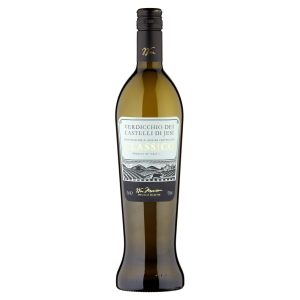
Top producers (like Monte Schiavo in this case) really get the best out of verdicchio grapes from Central Italy’s Marche region where its structure, savoury background and food-friendliness make it widely regarded as that area’s top white wine.
Soft with a very clean mouthfeel, 2017 Morrisons The Best Verdicchio (£6.25 at Morrisons and 12%) has crisp apple and lemon fruit yet still exudes real delicacy.
If you missed the day, don’t miss the wine
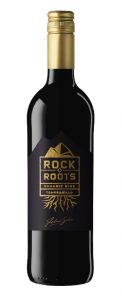
While we may have missed Tempranillo Day (12 November by the way), we are not too late to enjoy this attractive illustration from Spain’s Castilla-La Mancha region of what that variety does well.
While never sturdy in texture, the medium bodied 2018 Rock and Roots Organic Tempranillo (£6.25 at the Co-op and 13%) still opens with emphatic fruity aromas that lead into juicy cherry and plum fruit with lively acidity, suggestions of liquorice, cinnamon and dried herbs but very gentle tannin.
TOP TIP
Top Tip: I was frustrated that – despite its incredibly diverse formats – sherry still figures low down on many wine drinkers list, so I asked Erik Burgess to suggest where newcomers should start with sherry.
What I received was a major summary and fantastically comprehensive review of the subject that Erik and his brilliant wife Laura have compiled and which answers so many common questions; his words are reproduced in full below – with grateful thanks to them both.
What is Sherry?
Sherry is a fortified wine produced principally with Palomino and Pedro Ximénez grapes in the southernmost point of the Iberian peninsular, northwest of Cádiz in Andalucia.
Centred in and around the towns of Jerez de la Frontera, Sanlúcar de Barrameda and El Puerto de Santa Maria, these towns make up what is known as the Sherry Triangle.
To borrow the subtitle of Ben Howkin’s recently released Sherry book “Maligned, Misunderstood, Magnificent” these words sum up the current situation of what is such a versatile range of wines often marred by the 1970’s perceptions.
Sherry has two types of ageing – biologically under a layer of yeast called flor that prevents the wine coming into contact with oxygen, and oxidative in the presence of oxygen where flor is not present. This ageing process is carried out in the traditional system of “Solera y Criaderas”.
So where do you start with Sherry?
Many people find it one of the most challenging wines to try and enjoy. Often their first taste of it can be eye-opening and disagreeable.
Today the quality and range of sherries on offer can be confusing and, unless introduced correctly, can be a meander into the dark for some.
Choosing the correct style, storing correctly, serving at the correct temperature and understanding appropriate food pairings can determine the success or failure of an introduction.
Sherries range from ultra-dry Finos and Manzanillas to the more complex and intensive styles such as Amontillado, Palo Cortados and Oloroso which are also dry.
Never judge it on your first sip or discount it before trying it with food – persevere to discover all its flavours and you may find a wine that charms and surprises you.
Perfect Sherries for Autumn and Winter
Amontillado
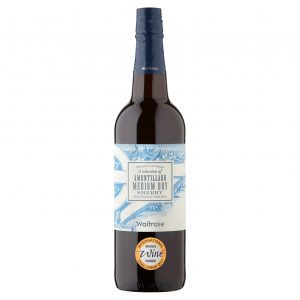
This sherry undergoes both types of ageing starting life as a biologically aged Fino or Manzanilla.
After fortification to 17% ABV the flor dies, and a period of oxidative ageing starts; amontillados generally are amber in colour with aromas of hazelnuts.
Serve chilled at 13 – 14 degrees Celsius, it can be matched with dried fruit and nuts, soups, chicken, pork, mature cheeses, vegetables such as artichokes and green asparagus and Asian cuisine.
Once opened, refrigerate and bring up to temperature before consuming and use within 3 months.
Palo Cortado
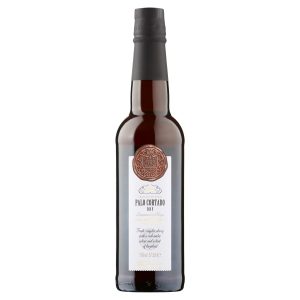
This is a sherry which, like Amontillado, undergoes both types of ageing.
Originally destined to be a fino or Manzanilla, these wines inexplicably lose their flor, are fortified to 17% ABV, so age oxidatively – which concentrates the flavour and alcohol.
They display great complexity with richness in the mouth like Oloroso but also with the delicate aromas of Amontillado, and are chestnut to mahogany in colour with citric bitter orange notes on the nose.
Palo Cortado’s have a deep, ample palate that delivers smooth delicate and aromatic notes in the aftertaste with a delicious lingering finish.
They pair perfectly with the same foods as Amontillado and should be served at 13 – 14 degrees Celsius and recommendations for its storage and consumption are the same as for Amontillado.
Oloroso
This is a dry Sherry fully exposed to oxidation during its time in the solera system.
The flavours and aromas of these wines are a result of contact with the air and oak inside the casks and they gain alcohol and concentration through ageing which leads to a great complexity on the palate along with a very long finish.
Perfect with mature cheeses such as Manchego, almonds, hazelnuts, beef and lamb, cured meats, game and rich stews it is best served at 12 – 14 degrees Celsius.
After opening refrigerate, bring up to temperature before serving and use within 3 months.
Cream Sherry
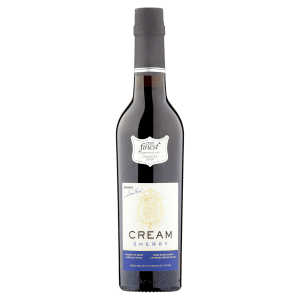
An often-maligned Sherry style, creams are the result of blending dry Oloroso (75% to 85%) with sweet Pedro Ximénez wine and should not be confused with Pale Creams such as Croft Original that use Fino or Manzanilla as their base.
After blending some creams may even undergo additional ageing through a solera although most are bottled straight after blending.
Serve chilled between 10 – 12 degrees Celsius, Cream can be enjoyed with blue cheese, foie gras, chicken liver parfait, dark chocolate and desserts such as crème brulee, rice pudding and fruit tarts
Once opened, refrigerate and bring up to temperature before consuming. Ideally use within 3 months after opening.
Conclusion
Amontillado, Palo Cortado and Oloroso can easily be a substitute for textured full bodied red wines. As opposed to most still table wines, closed Sherry bottles should be stored upright.
Sherry Recommendations
Don’t be afraid of the Supermarket own brand Sherries. Many come from some of the prestigious Sherry Houses such as Lustau, Williams and Humbert or Grupo Estevez (Valdespino) and others
Amontillado
- Waitrose Dry Amontillado Sherry 75cl 19% ABV – An own brand Amontillado produced for Waitrose by Bodegas Lustau
- Valedespino Tio Diego Amontillado 18% ABV 75cl – A single vineyard Amontillado from the “Grand Cru” vineyards of the Macharnudo Alto
Palo Cortado
- Morrisons The Best Palo Cortado, NV 19% 37.5cl – An own brand Palo Cortado produced for Morrisons by Bodegas Lustau
- Cayetano del Pino Palo Cortado Solera 75cl 20% ABV – Available from The Wine Society in 75cl
and from Waitrose in a 37.5cl bottle
Oloroso
- Bodegas Lustau Rio Viejo Oloroso 20% ABV 75cl – An Oloroso with 8 years of average ageing this is a fantastic introduction to the style.
- Williams & Humbert 12-Year-Old Oloroso, Sherry 19% ABV 37.5cl – Available from Waitrose
Cream
- Tesco Finest Cream Sherry 37.5cl 18% ABV – Made by acclaimed Sherry winemaker Antonio Flores of Gonzales Byass this is a blend of 75% Oloroso and 25% Pedro Ximenez
- Lustau East India Solera Rich Oloroso Sherry 50cl 20% ABV – A cream that spends an additional 3 years in a solera after blending
This is the tip of the iceberg and there are so many more to discover!
Biographical Note:
Erik Burgess is Purchasing Manager and Wine Educator at Kimpton Blythswood Square Hotel, Glasgow – Scotland. He says:
“The traditional wines of Andalucia have become my passion with regular time spent in the region.
In 2016 (along with my wife) we became the first UK Technical Specialists in the Generous Wines and Vinegars of D.O. Montilla-Moriles.
Following on from that in September 2018 I qualified as a Certified Sherry Educator and my wine education has continued with success in passing the WSET Level 2 in Wines and Spirits with distinction in March 2019.
I conduct staff training in Sherry and Wine at the 5* Kimpton Blythwood Square hotel in Glasgow, designing sherry flights for special occasions including International Sherry Week.
My wife and I also write about our wine experiences and review wines at our web site.
Web: www.montillamorileswines.com
Email: info@montillamorileswines.com or Web: www.montillamorileswines.com
Many thanks Erik for such an excellent summary and I certainly agree that some supermarket own label sherries are good value for money and represent an excellent starting point for anyone unsure which style suits them best.
Next Thursday sees that start of our Christmas wine recommendations so be sure to tune in for a look at what would nicely grace your own Christmas lunch table.







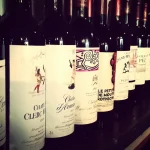

2 responses
Top choice – Riesling Trocken from Von Goler at LIDL. Thank you Brian
Thanks Richard – and really good to hear from you – I, too, loved the way that wine was a thoroughly modern riesling in terms of dryness yet also quite traditional with its lime acidity and apple fruit. Glad it ticks boxes for you too.